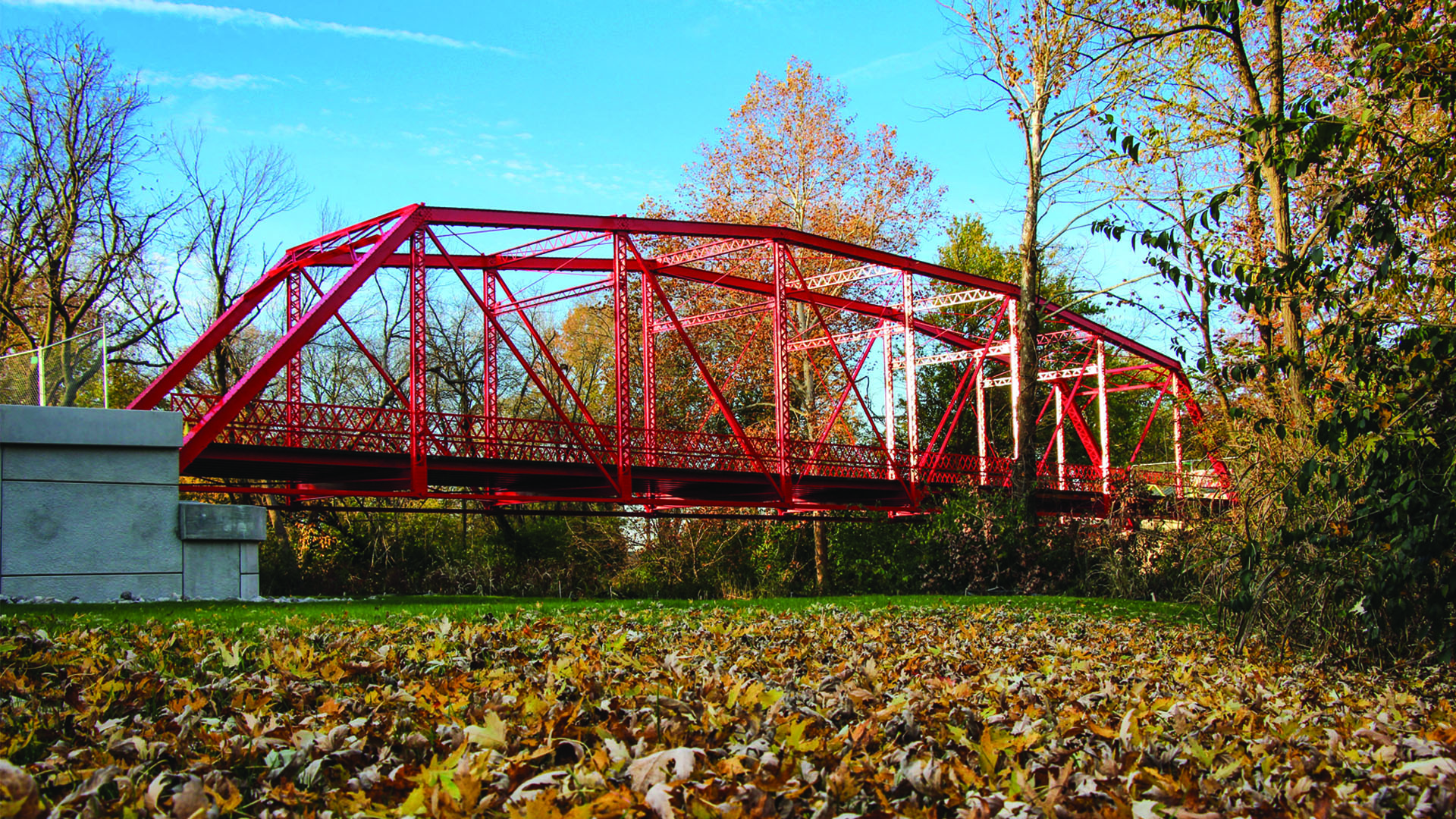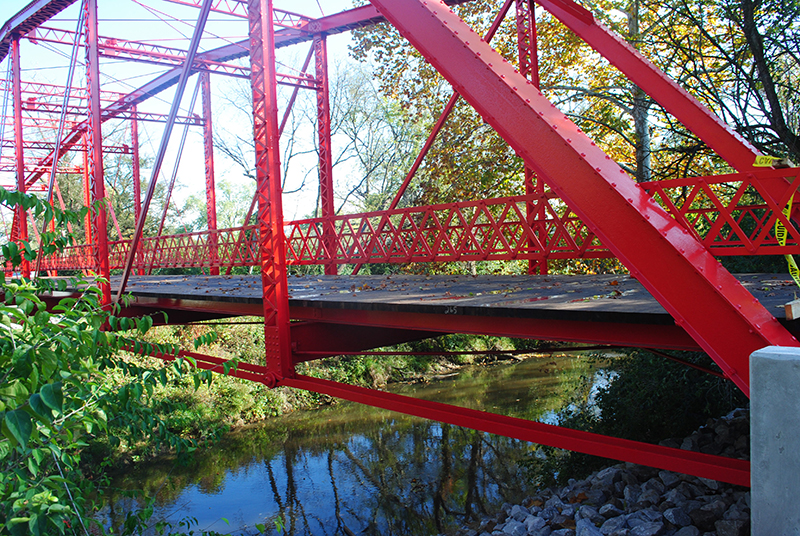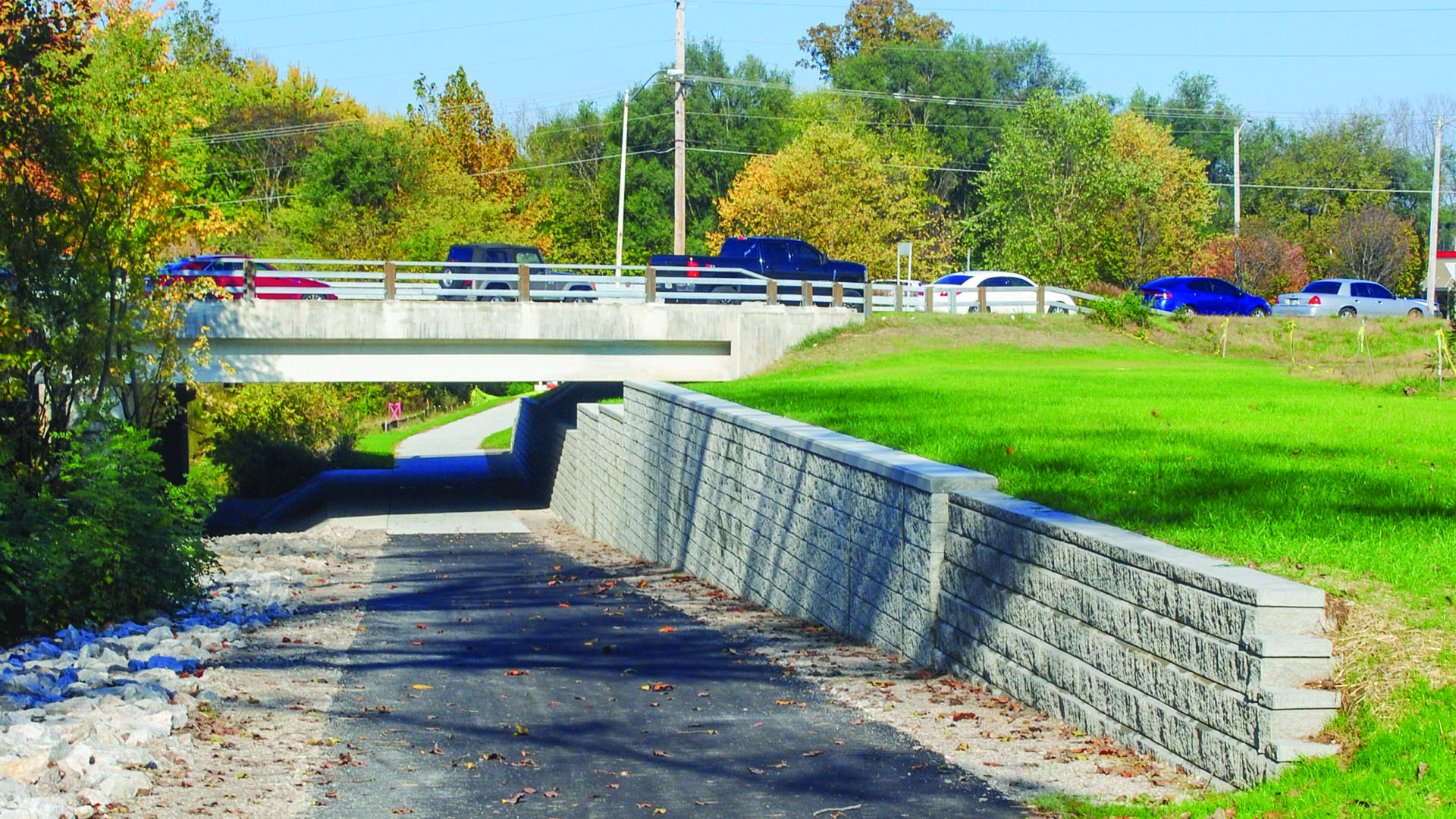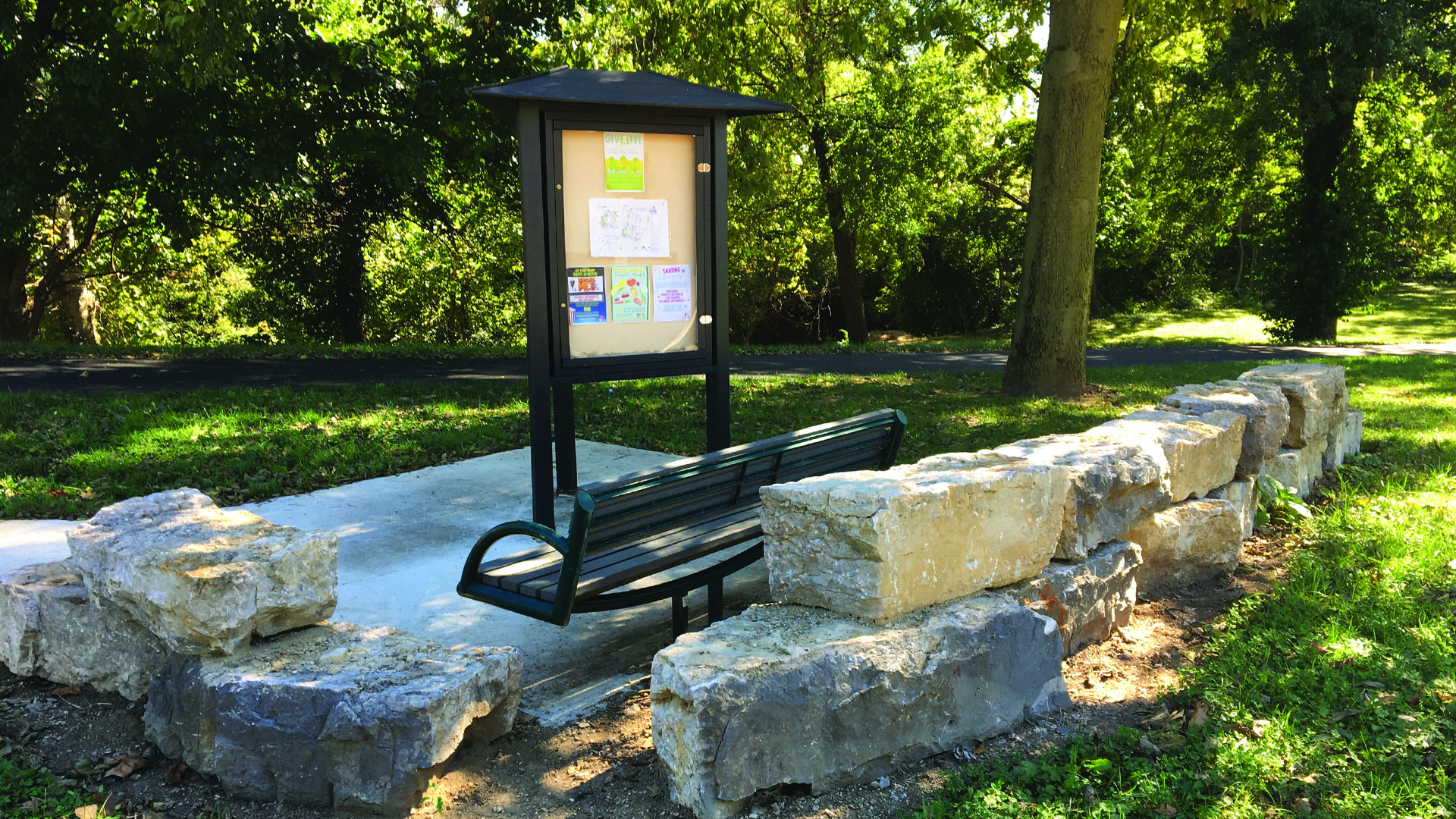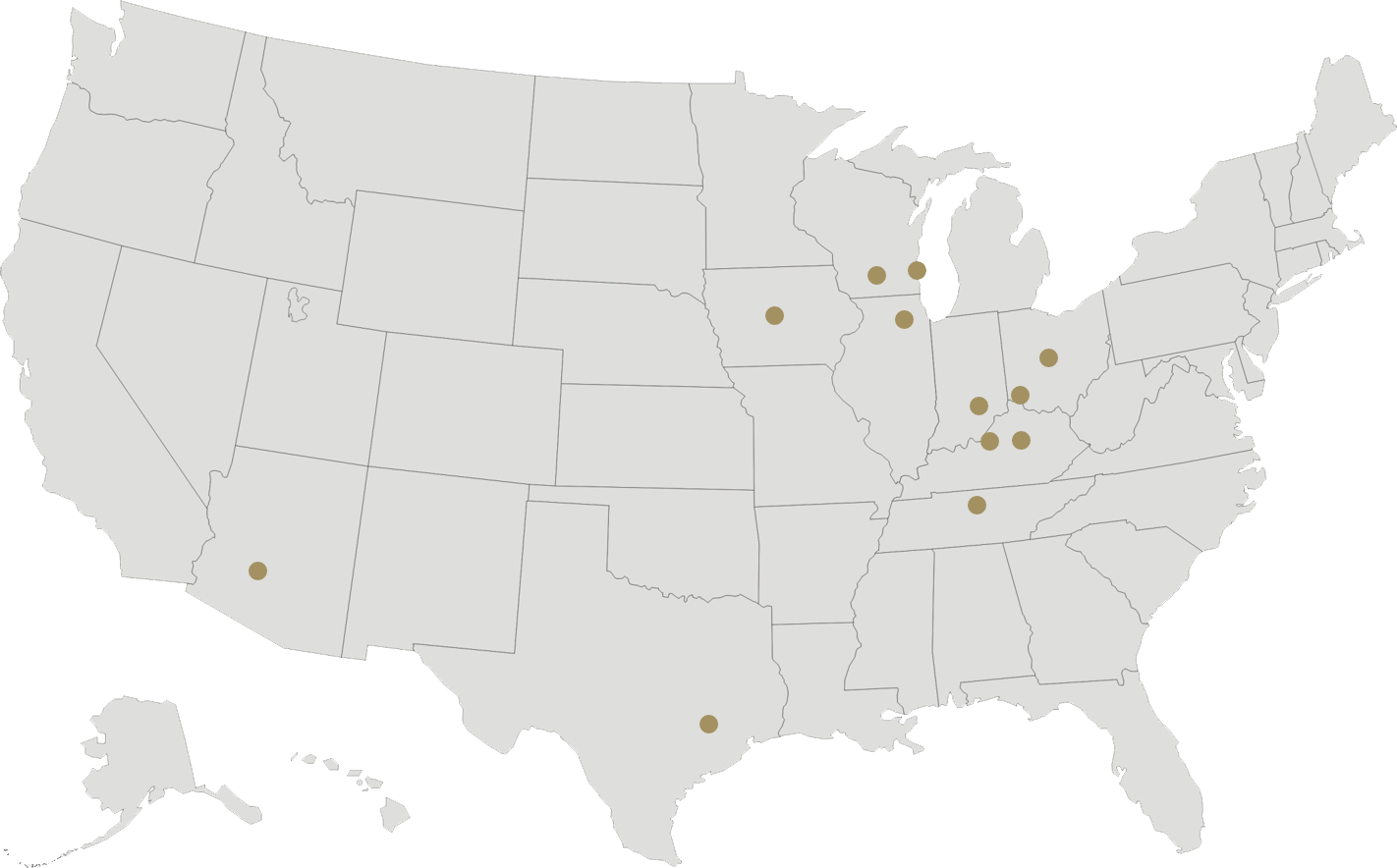Awards: ACEC Indiana Engineering Excellence Honor Award; ACEC National Recognition Award
The 107-year-old steel truss bridge carrying Newbern Road over Clifty Creek in Bartholomew County needed rehabilitation or replacement to provide a suitable creek crossing for modern farm equipment and school buses. Because of the age and structure type, the bridge received a historic designation, so rehabilitation was required either in-place or the historic bridge would have to be moved to a new location. The County had spent nearly 20 years searching for a solution to this crossing issue. Rehabilitation in-place would not address the narrowness of the structure; realignment would solve that issue, but a new structure adjacent to the truss would require new right of way (ROW) and possible residential relocations.
The City of Columbus, Indiana, explored alternative routes for its People Trail system that crossed 25th Street, one of the busiest thoroughfares in the City and, as such, was causing many users to avoid this portion of the trail out of concerns for safety. The solution would require the crossing of Haw Creek. The City, County, and project team recognized the benefits of reusing the historic steel truss bridge from Newbern Road for the Haw Creek crossing, allowing for the preservation of the historic bridge and achieving the bypass of a major intersection in the city.
The completed 0.5-mile trail extension between 25th Street and Lincoln Park is a vital link in the 15-mile People Trail system, connecting the 30-acre Lincoln Park to several highly populated neighborhoods, as well as other sections of the trail system, by enabling users to safely bypass 25th Street. The path now passes under the roadway and continues along Haw Creek to the relocated 107-year-old historic steel truss bridge that spans the creek and provides direct access to the park.
Relocation of the bridge required disassembly, rehabilitation, transportation, and reassembly of the structure at the new site. Several structural members were severely deteriorated, which required refurbishment prior to reassembly. A 3-dimension (3-D) laser scan of each member produced highly accurate measurements that were used to create a 3-D model of the structure and develop a 22-page reassembly instruction manual that improved construction site safety and expedited the construction schedule.
Rerouting the trail along the creek and minimizing ROW acquisition of valuable commercial land along the creek necessitated the use of retaining walls along this portion of the trail. Three types of retaining walls were used to reduce the amount of ROW needed and environmental permitting required, which ultimately reduced the project cost and expedited the schedule. A mechanically-stabilized earth wall reduced fill in the floodway, while the modular block and sheet pile walls preserved as much developable land as possible.
By bringing these two projects together, residents of eastern Bartholomew County no longer need to take a detour along Clifty Creek, and residents of Columbus have a safer pedestrian trail that has received positive feedback from visitors, creating a sense of pride in the community and inspiring an appreciation for historic structures that have stood more than 100 years, now with a new purpose.
Back to Project Gallery